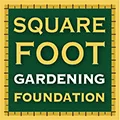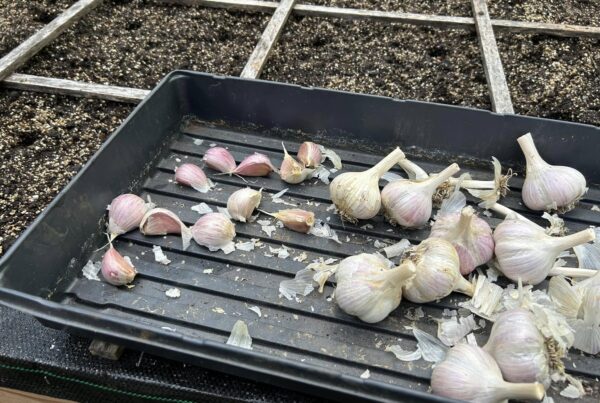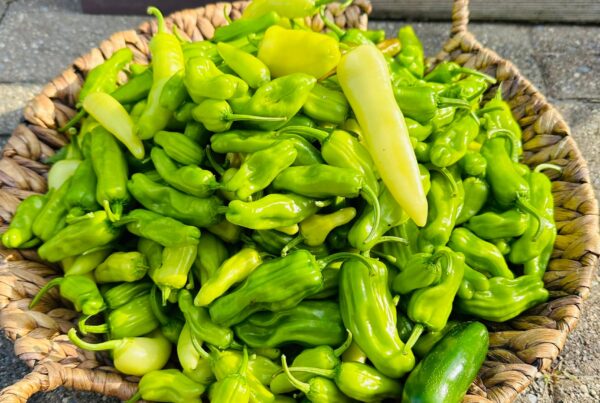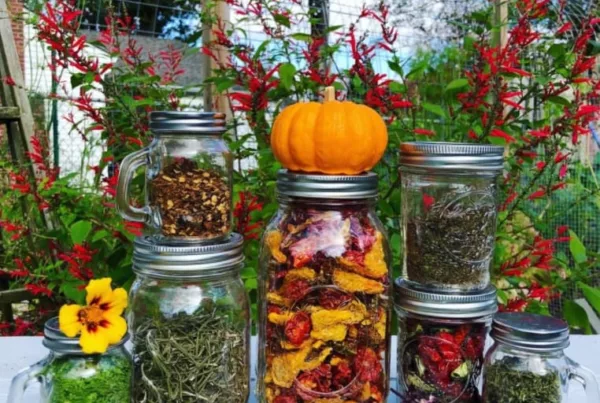We all know that one of the integral components of Mel’s Mix™ is compost, and we recommend using several different types of compost if you buy it, but you can also make your own. (You can make your own and mix it with purchased compost, as well. Tip: if you purchase compost to use, make sure that peat moss is not one of the first few ingredients.)
Making Your Own Compost
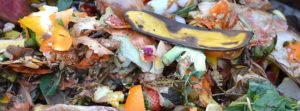 Let’s say you want to make your own compost and you’re raring to go. Only… you’re not, because you’re confused. You’re not sure which kitchen scraps you can use, and how much, and where to store them. Lucky for you, we have some answers!
Let’s say you want to make your own compost and you’re raring to go. Only… you’re not, because you’re confused. You’re not sure which kitchen scraps you can use, and how much, and where to store them. Lucky for you, we have some answers!
Here’s the skinny on composting with kitchen scraps.
Q: What materials go into the compost pile?
A: You may have heard that compost ingredients are either green or brown. That’s kind of right, but it’s more accurate to say they’re either nitrogen-rich or carbon-rich — and while that sounds really technical, it’s not. Nitrogen-rich (“green”) materials include coffee grounds, vegetable peelings, fruit, egg shells, disease-free plant clippings, even chicken droppings. Carbon-rich materials (“brown”) are dead leaves (Run over them with a lawn mower first), straw, dried grass clippings, hay, and shredded paper.
Q: What’s the ratio of carbon (browns) to nitrogen (greens) materials?
A: Technically speaking, it’s about 30:1, but that’s assuming you want your compost pile to break down quickly and give you compost as soon as possible. It’s fairly difficult to get that exact ratio down, so simply aim to have a majority of your ingredients be carbon, or brown, ones with the remaining ones nitrogen, or green. If the ratio is off, it’ll just take longer to decompose, but it will still decompose. Try to hit a 4:1 ratio of browns to greens.
Q: How do I safely store kitchen scraps until I’m ready to add them to my pile?
A: Ready-made kitchen compost buckets are ideal — they have lids with charcoal filters to combat less-than-pleasant odors, but can cost as much as $50. To make one yourself for less, use an old plastic coffee can with a charcoal filter (available at pet supply stores) hot glued to the inside of the lid that has ¼” holes drilled into it for air ventilation.
Q: Are there any kitchen scraps that should not go into the pile?
A: Yes — avoid any ingredient that was not once a plant. Meat or bones, whole eggs, dairy products, bakery products, grease, and seeds and fruit pits should not be added to the compost pile.
Remember the 4 M’s of Making Compost
Mix – Use as many different plant-based ingredients as possible
Mash – Chop ingredients into small pieces
Moisten – Make sure the pile is not too wet and not too dry — feels like a wrung out sponge
Move – The more often you turn it the quicker you will get compost
